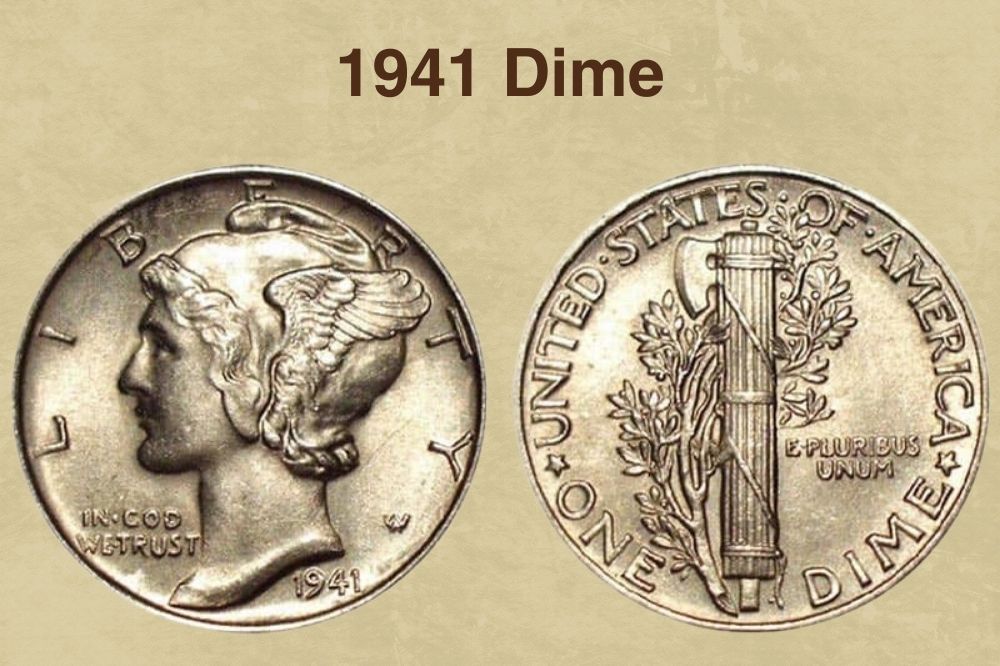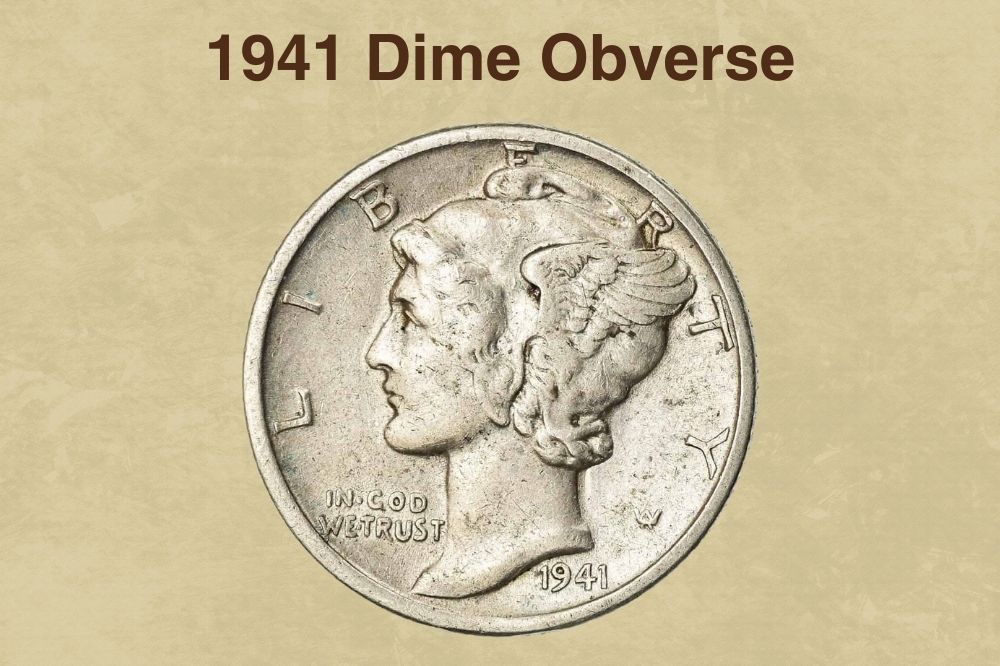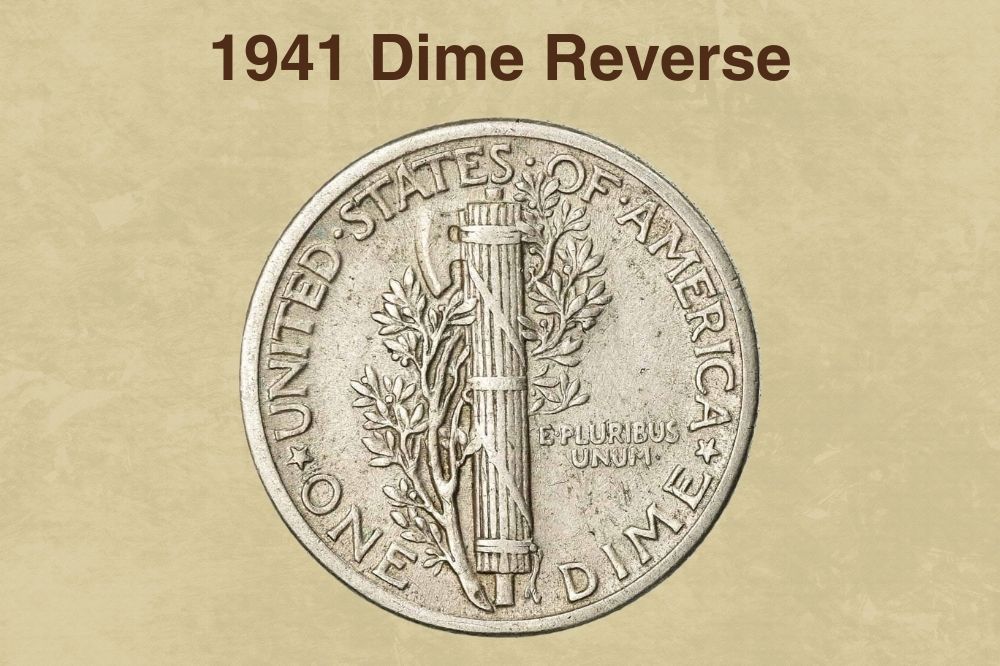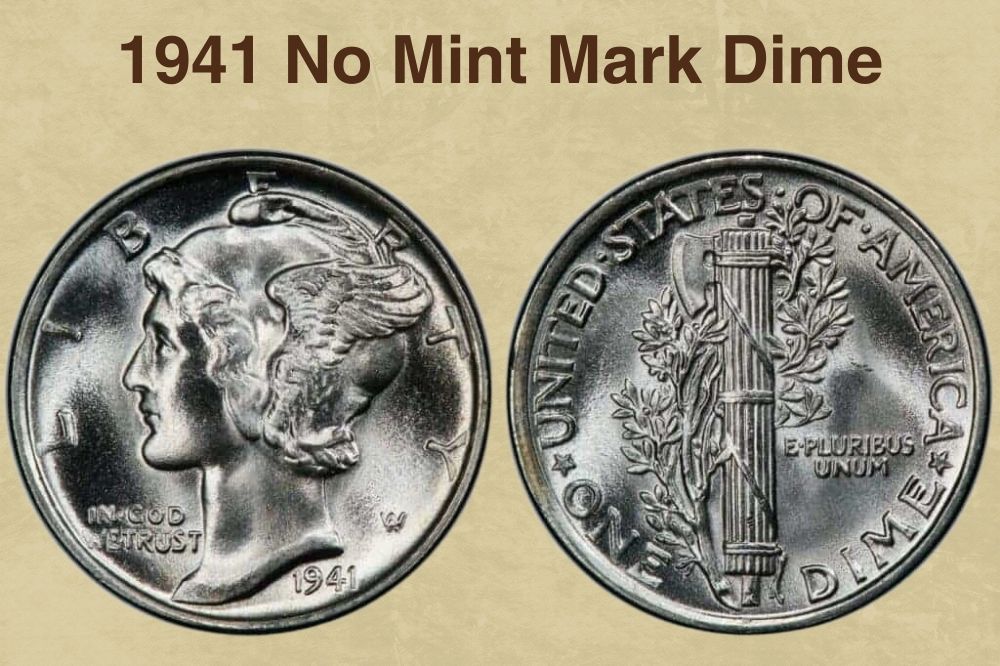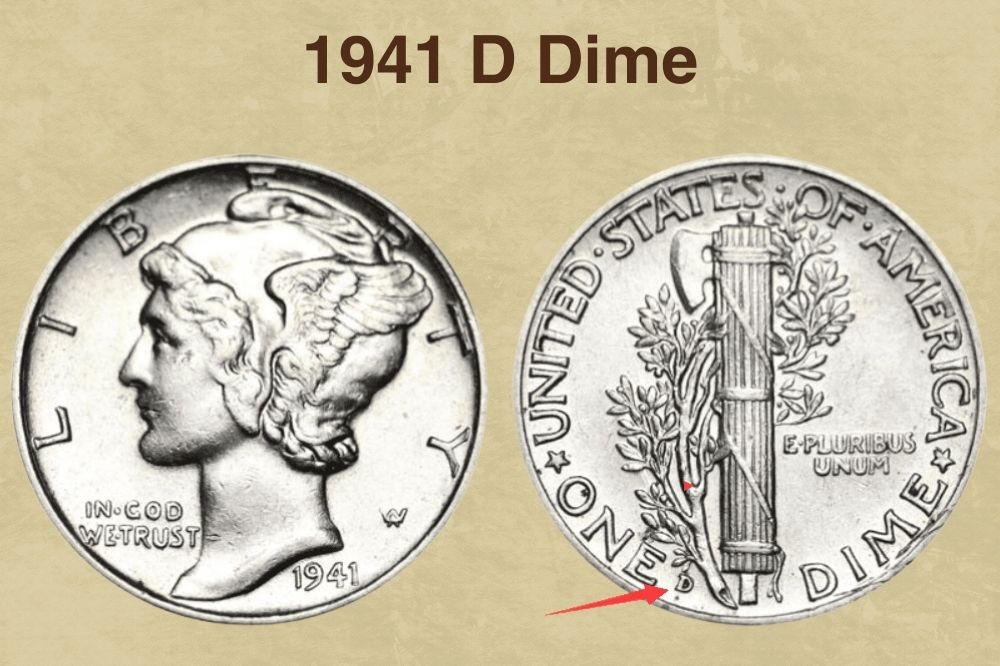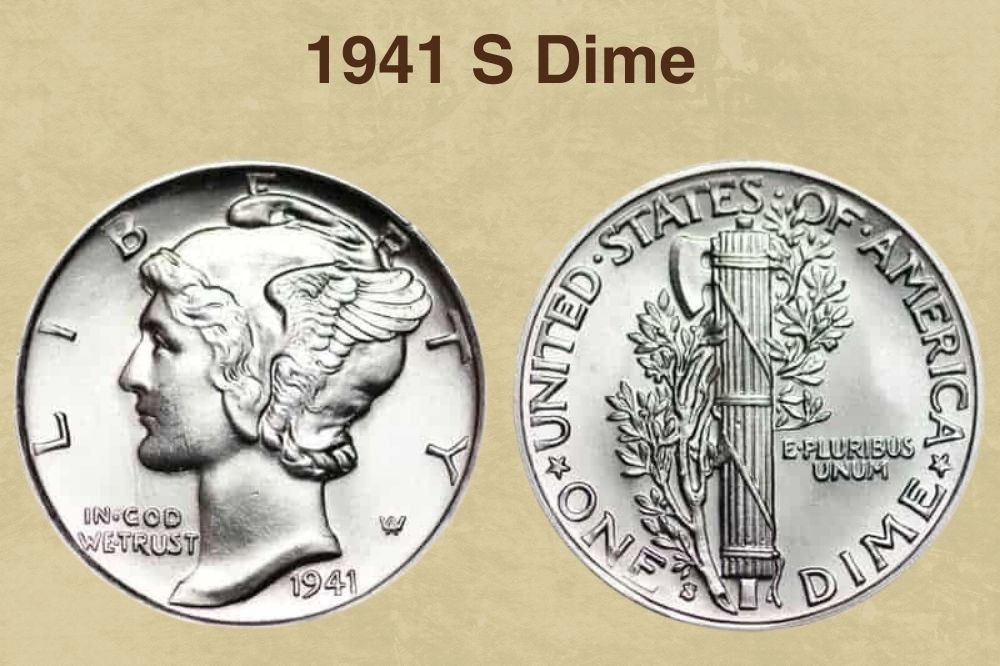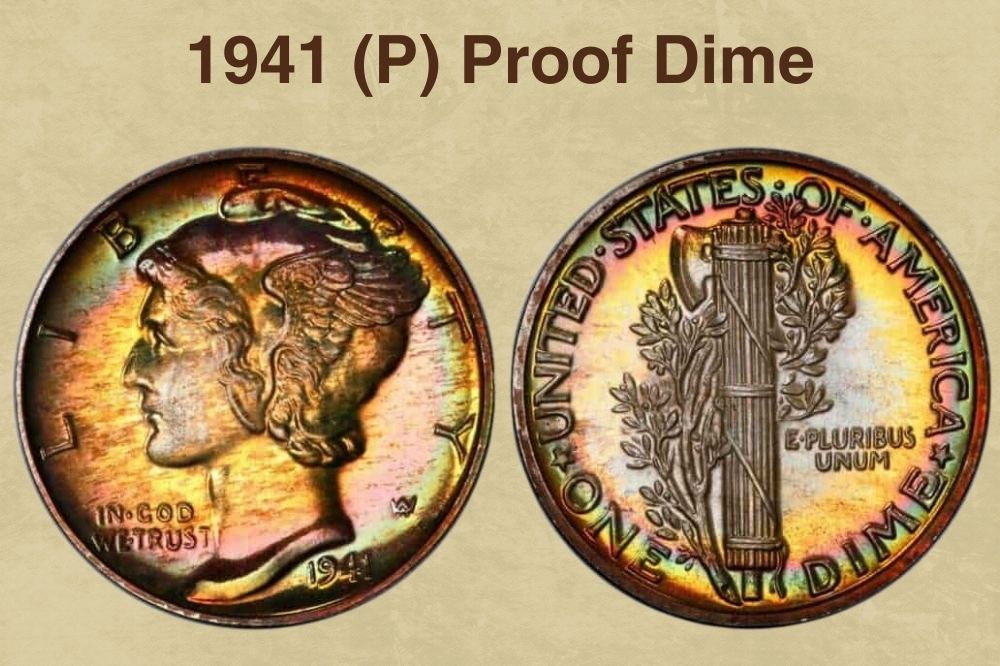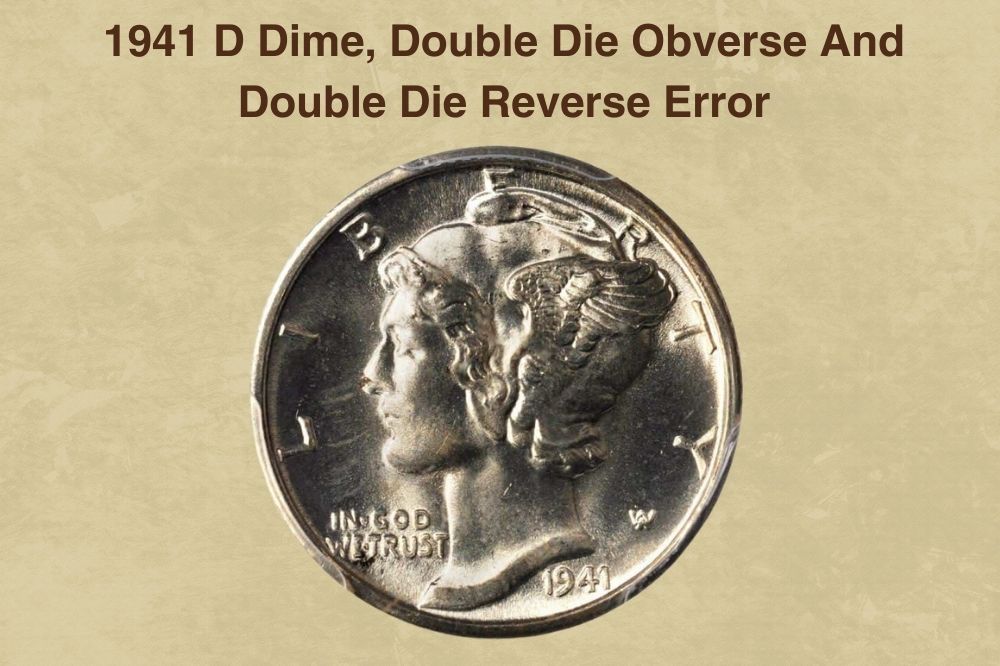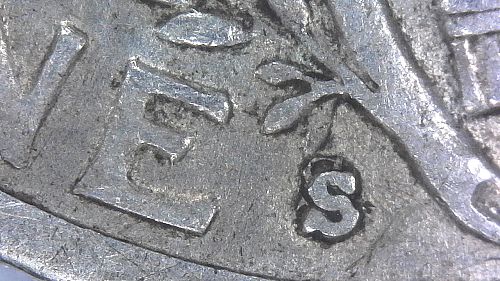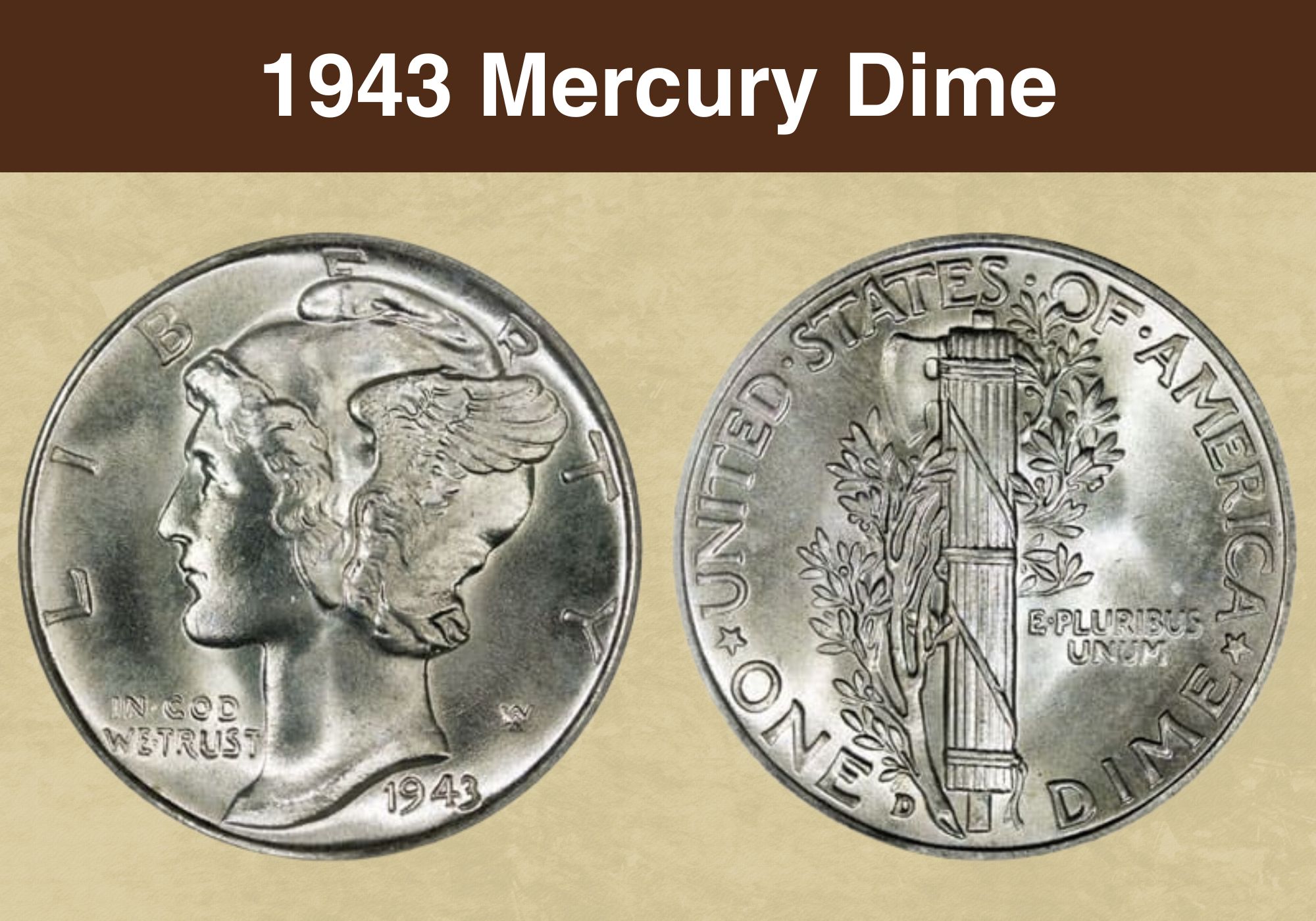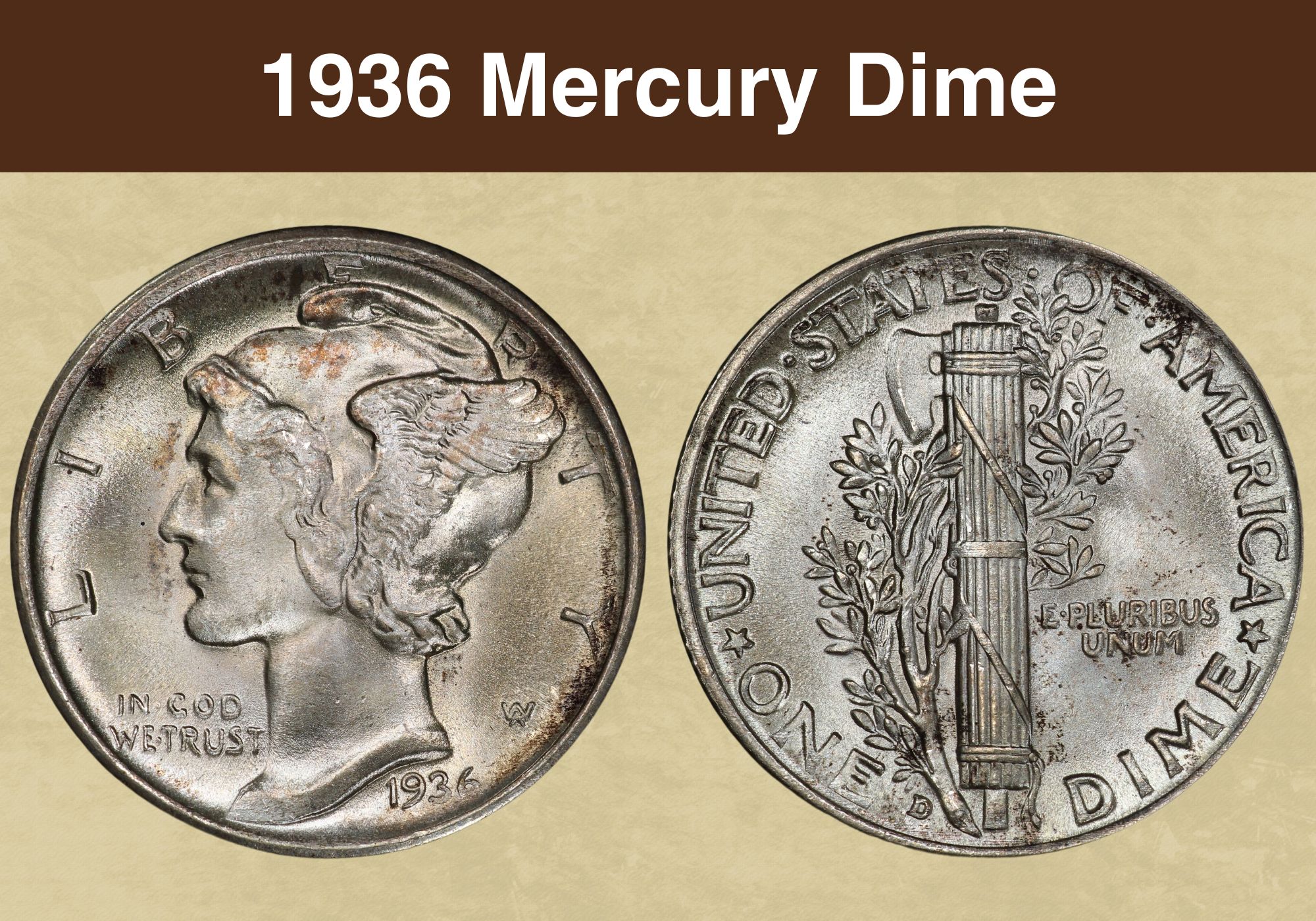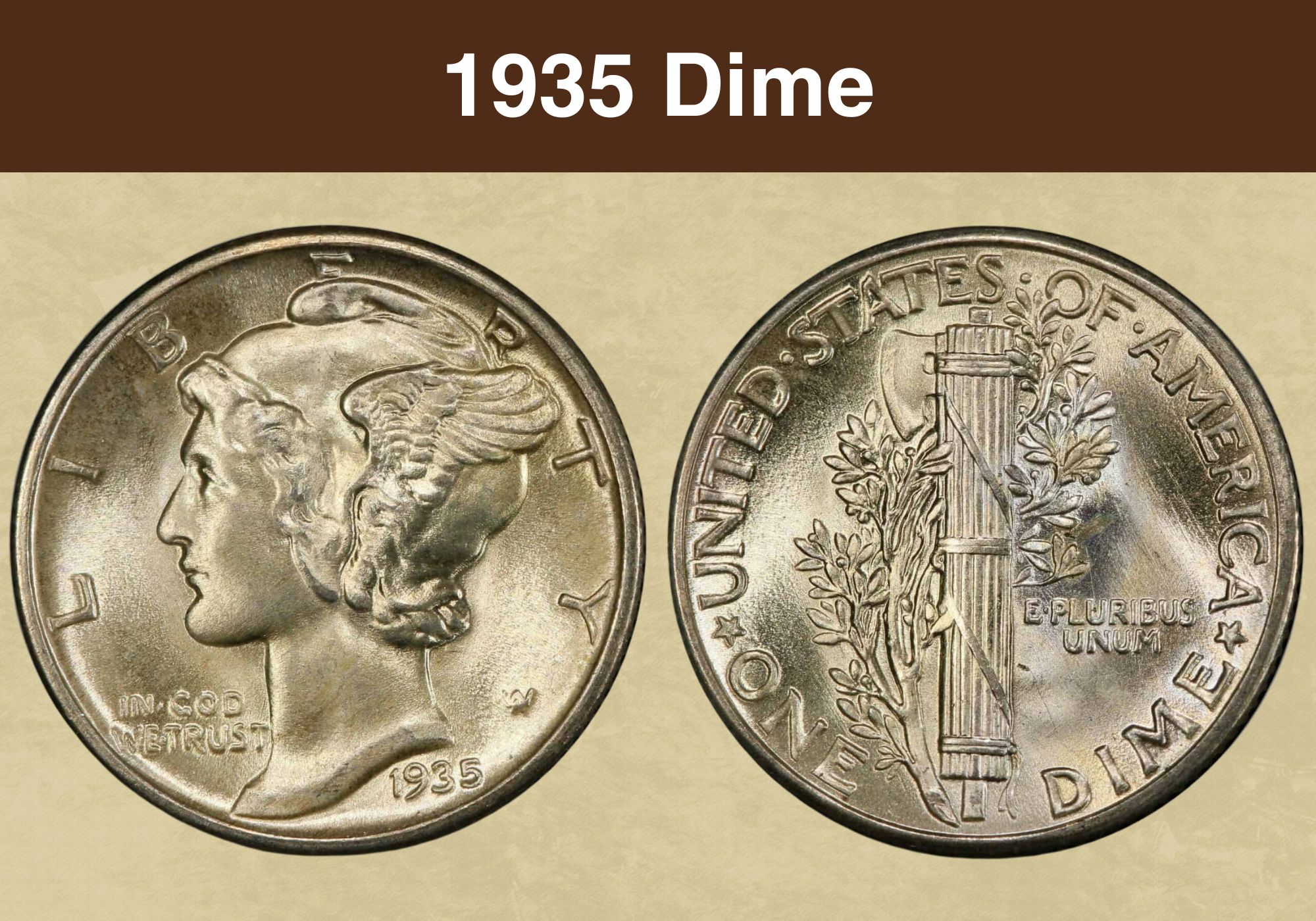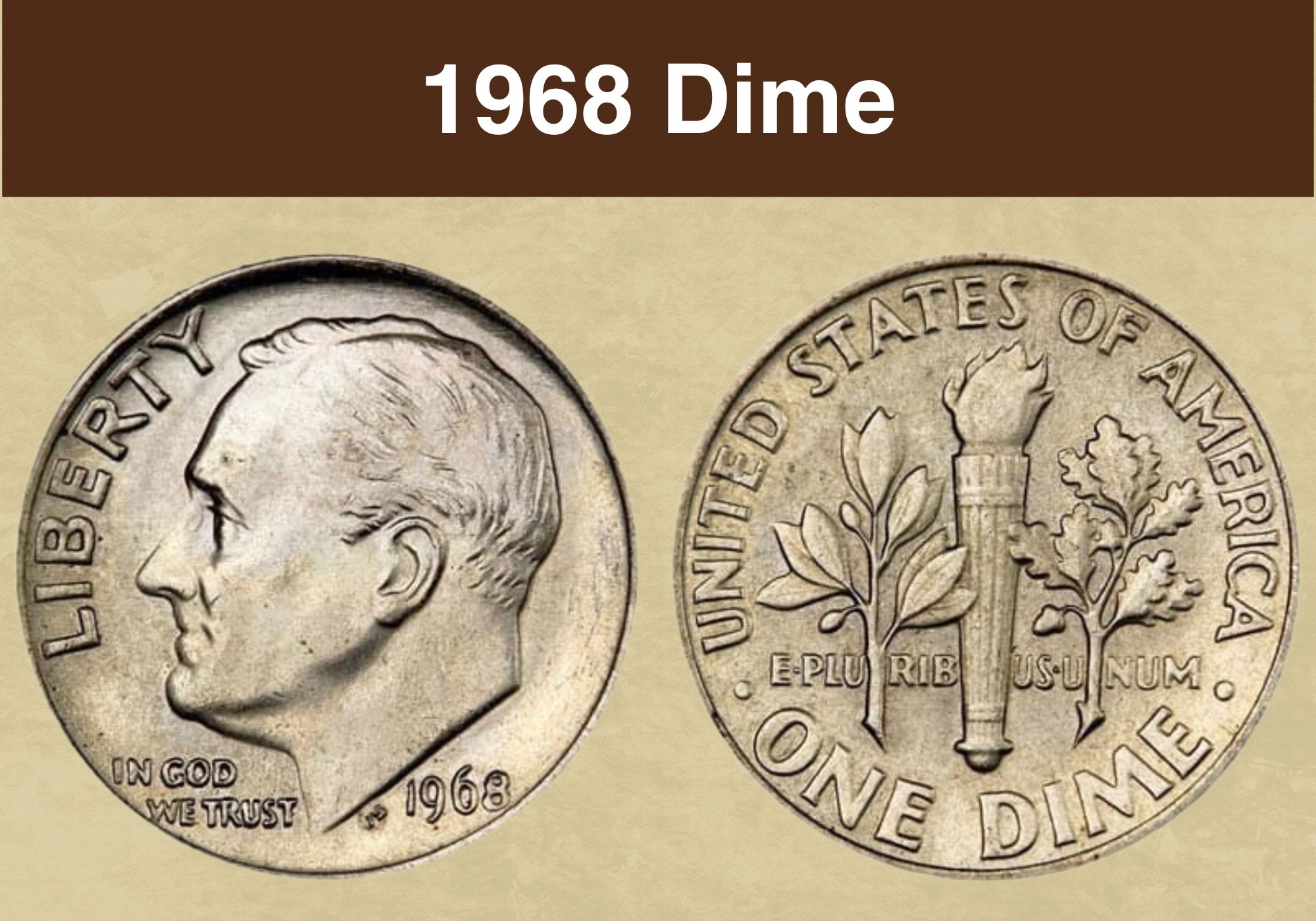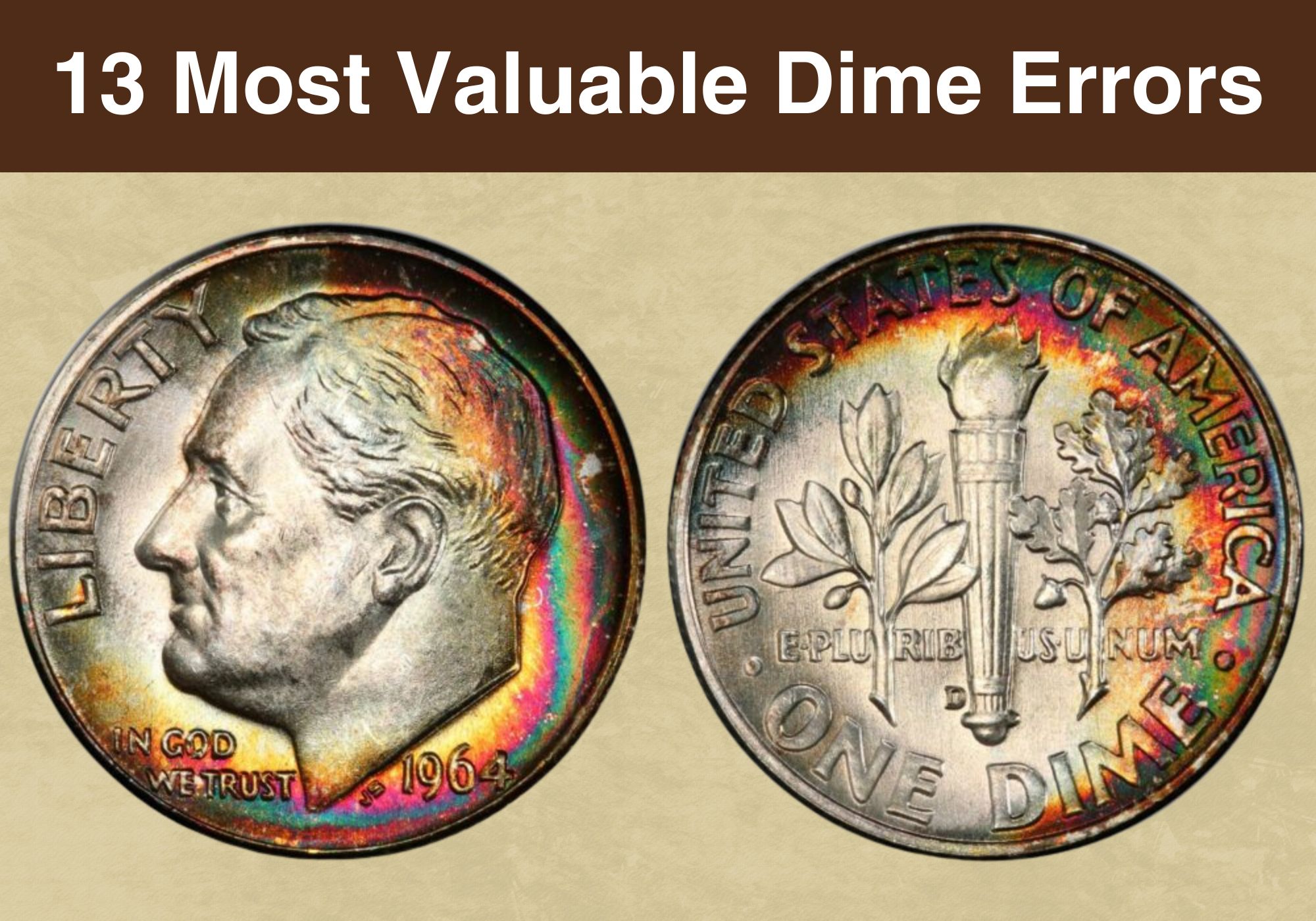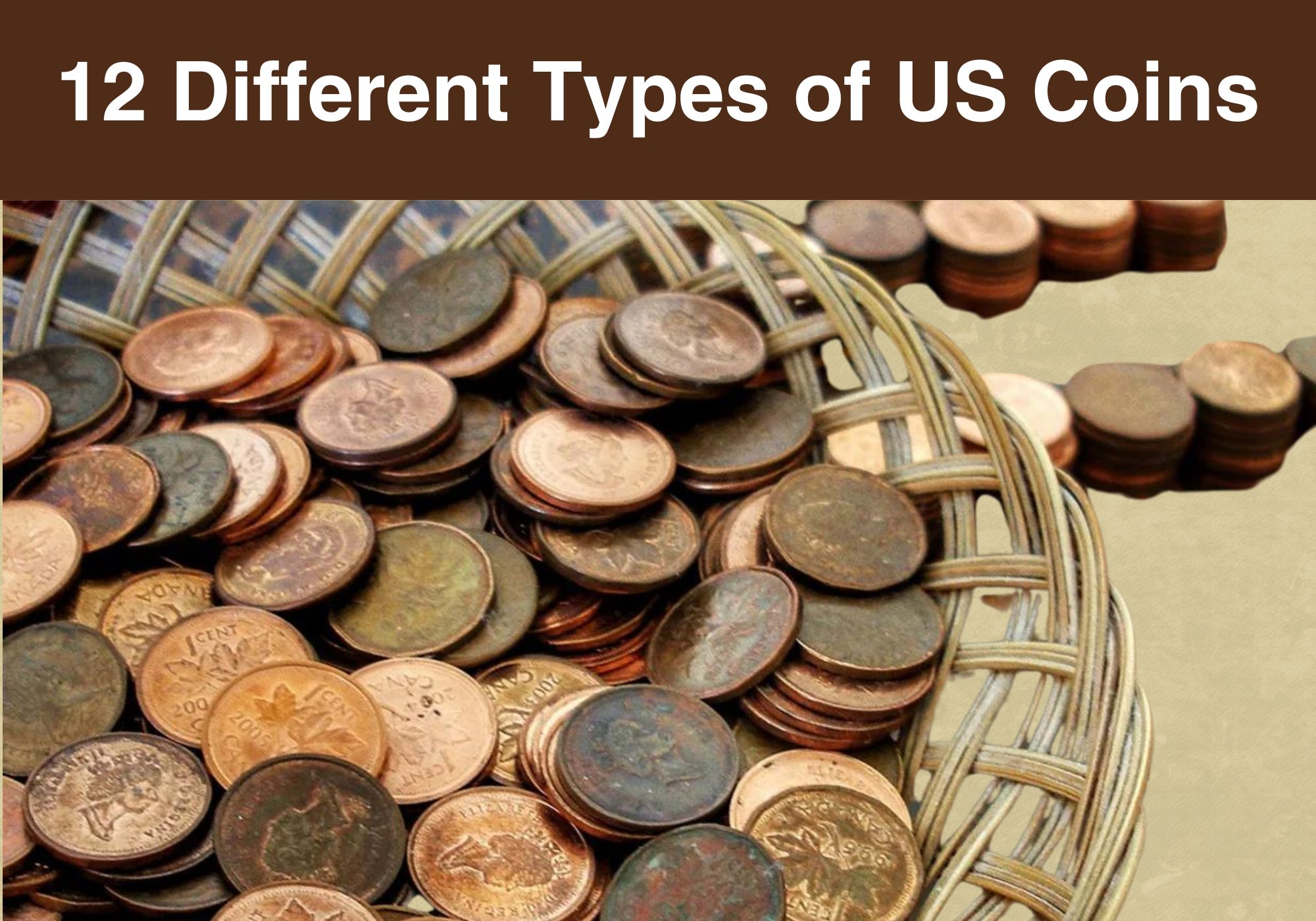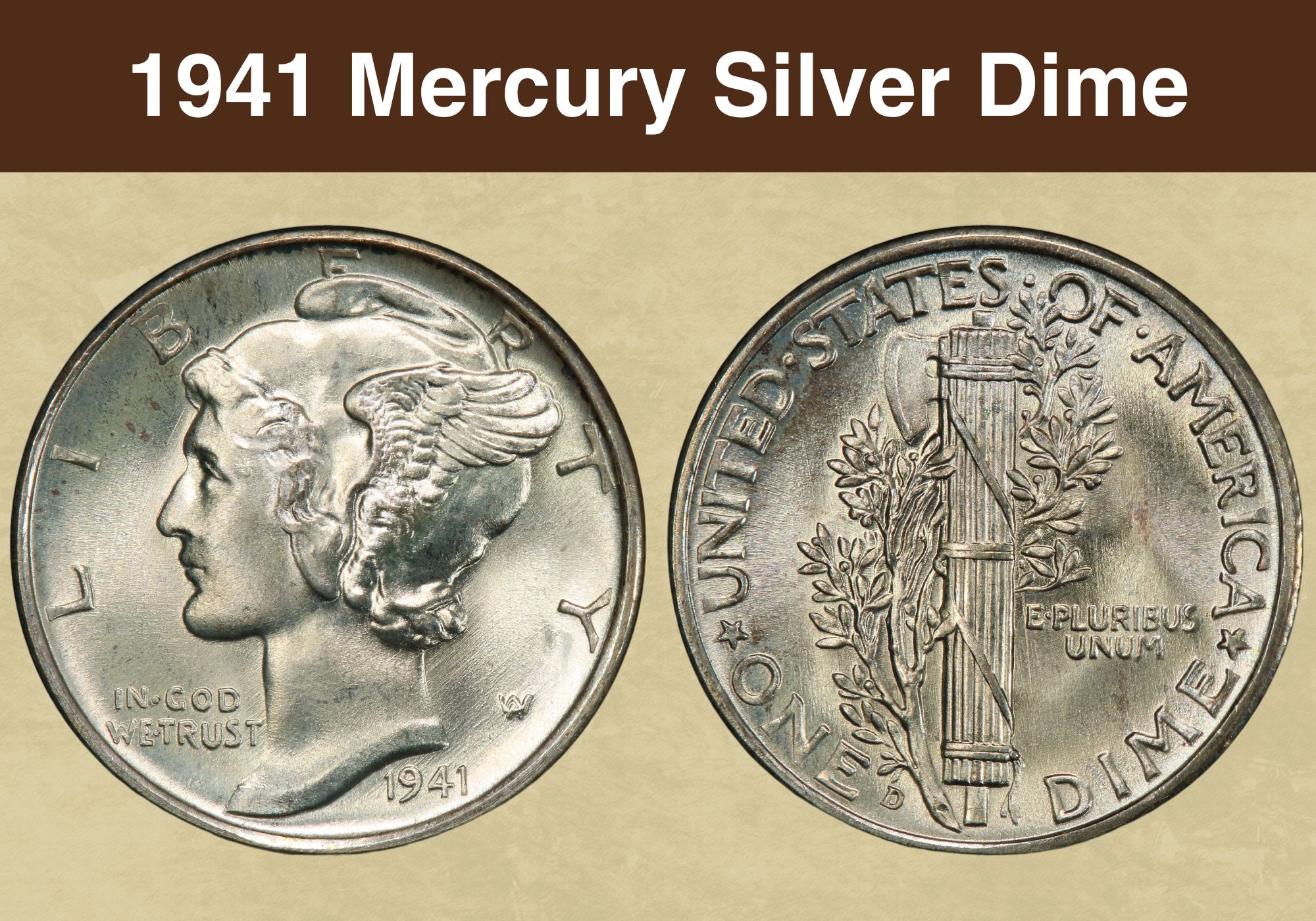
Coin Value Contents Table
If you’ve found a dime dated 1941, you’re probably wondering if it’s valuable. Well, you’ve come to the right place!
The 1941 dime value can vary according to its mint mark and condition. We’re going to look at how those factors affect how much an individual coin is worth. And we’ll also check out some interesting Mint errors that can add big premiums to coin value.
So if you’re ready to learn more, let’s get started!
1941 Dime Value Chart |
||||
| Mint mark | XF45 | MS60 | MS65 | MS67 |
| 1941 (P) No Mint Mark Dime Value | $5 | $125 Full band: $15 | $215 Full band: $62 | $400 Full band: $250 |
| 1941 D Dime Value | $5 | $11Full band: $15 | $44Full band: $62 | $110Full band: $185 |
| 1941 S Dime Value | $5 | $11Full band: $20 | $44Full band: $75 | $110Full band: $300
Full band prooflike: $1,500 |
| PR60 | PR65 | PR67 | PR69 | |
| 1941 (P) Proof Dime Value | $125 | $215 | $400Cameo: $9,500 | $48,500 |
History of the 1941 Dime
The ten-cent coins minted in 1941 are part of the series known as “Mercury dimes”. These were produced from 1916 to 1945.
They are so named because of the image of Lady Liberty on their obverse. She is depicted in a cap with wings, similar to the classical portrayal of the god Mercury.
In 1916, the dime’s previous design had been produced for 25 years. The Mint director at the time, Robert W. Woolley, wrongly believed this meant it had to be retired. In fact, 25 years was the earliest the Mint could change the design without seeking Congressional approval.
Alongside the dime, Woolley commissioned new designs for the quarter and half dollar. But the drafts proposed by the Mint engravers weren’t to his liking, and he launched a national competition to find alternatives.
The man chosen to design the new dime was the renowned sculptor, Adolph Weinman. Weinman was also the winner of the competition to redesign both sides of the dollar.
The earliest Mercury dimes were struck in large quantities. But in 1930 the Great Depression struck, and the need for new coins lessened. No dimes at all were struck in 1932 or 1933.
But in 1934, things were looking up. And in 1941, the Mint facilities at Philadelphia, Denver and San Francisco were all pressed into service striking dimes. Almost 265 million of them were produced for circulation that year.
The series came to an end in 1945, when it was replaced by a design honoring President Franklin D. Roosevelt.
Also read: Top 17 Most Valuable Roosevelt Dimes Worth Money
Features of the 1941 Dime
The Obverse of the 1941 Dime
The nickname “Mercury dime” comes from the design on the obverse – the “heads” side – of the coin. This shows Lady Liberty in a winged cap.
Many newspapers misidentified her as the Roman god Mercury. They obviously weren’t looking too closely – the image on the coin is very clearly female. Some collectors dislike the nickname “Mercury dime” for this reason, and prefer to refer to the coins as “Winged Liberty Head dimes”.
The artist behind it was the famed sculptor and engraver, Adolph Weinman. Although he refused to be drawn on the identity of his model, she is generally believed to be a woman named Elsie Stevens. Elsie and her husband rented an apartment belonging to Weinman in Manhattan.
Weinman’s portrait shows Liberty in profile facing left as the coin is viewed. The cap she wears is known as a pileus, and Weinman said that he had chosen it to represent “liberty of thought”.
Just as with his design for the Walking Liberty dollar, the obverse of the Mercury dime is dominated by the portrait. The word “LIBERTY” curves in parallel to the upper coin edge, but the bottom of the “E” and “R” disappear behind the woman’s head.
“IN GOD WE TRUST” is tucked alongside Liberty’s neck, on the left as the coin is viewed. The date appears at the very bottom on the right, inscribed on the horizontal. Weinman’s monogram is positioned just above it.
The Reverse of the 1941 Dime
Like the obverse, the reverse of the 1941 dime has a classical theme. It too was designed by Weinman and depicts a bundle of sticks together with an axe.
The sticks are a fasces, an emblem carried by Roman lictors. These were men who acted as attendants and bodyguards to magistrates. The fasces, therefore, represents justice, while the axe represents war. Wound around both is a large olive branch representing peace.
The name of the country is inscribed at the top, parallel to the coin’s top edge. The denomination mirrors it at the bottom, with the two separated by stars representing the states.
The motto “E PLURIBUS UNUM” appears to the right of the fasces as the coin is viewed. The words are Latin and mean “From the many, one”, referring to the formation of the USA from independent states.
Dimes struck in Denver or San Francisco have a mint mark on the reverse, while those from Philadelphia don’t. Look for it above the “E” of “ONE”. A small “D” signifies Denver, while a small “S” is for San Francisco.
Other Features of the 1941 Dime
Some 1941 dimes are designated as “full band” or “full split band” coins, often abbreviated to “FB” in coin catalogs. This means that the coin has an excellent level of detail, the result of a strong strike. And the designation adds a significant premium to coin value.
The bands here refer to the bindings on the fasces on the reverse. There are two diagonal and three horizontal bindings. But only the central one is considered for the FB designation.
That is comprised of two bands, one above the other. To be designated “full band”, the coin must have a complete and clear line separating the two.
Take a look at this YouTube video from BigDCoins to learn how to tell if your Mercury dime has a full band.
1941 Dime Grading
| # | Grade |
|---|---|
| 1 | Basal State-1 |
| 2 | Fair |
| 3 | Very Fair |
| 4, 5, 6 | Good |
| 7, 8, 10 | Very Good |
| 12, 15 | Fine |
| 20, 30 | Very Fine |
| 40 | Extremely Fine |
| 50 | About Uncirculated |
| 60 | Mint State |
| 65 | Mint State |
| 70 | Mint State |
Please check our grading guides to know your coin scale, It’s the necessary step to know the exact value of your coin.
Check out now: How to Grade Mercury Dime?
1941 Dime Value Guides
1941 No Mint Mark Dime Value
The Philadelphia Mint facility struck over 175 million dimes in 1941. If there’s no mint mark on the reverse of your coin, it’s one of that number.
Today, the PCGS (an independent coin grading agency) estimates that around 10,000 survive. About 6,000 of those are mint state coins graded 65 or higher out of 70. Coins in this condition are classified as “gems”.
Coins graded from 1 to 59 are in circulated condition. In other words, they’ll show some signs of wear and tear as a result of being used and handled.
1941 Philadelphia dimes graded at the lower levels are generally worth around $4. That rises by a dollar for an example graded “extremely fine” (XF45). And mint state examples start at around $11 for a coin graded MS60.
Values for gem quality coins without the full band designation range from $44 at MS65 to $2,000 for the sole example certified MS68+.
A full band designation is, by definition, only possible on a mint state coin. It adds $4 to a coin graded MS60 – but the premium at the highest grades is much more.
The PCGS has certified 22 coins at MS68 with the full band designation. It values each of those at $4,000.
And the very finest examples, three coins graded MS68+, are each worth a staggering $17,500.
1941 D Dime Value
The Denver Mint facility struck far fewer 1941 dimes than Philadelphia – 46.6 million of them. Prices for circulated and mint state examples are nevertheless usually the same for dimes from both locations.
A 1941 Denver dime is worth around $11 at MS60. Quality tops out at MS68, and although the PCGS has certified only one coin at that level to date, it clearly expects there to be far more. The estimated value is a modest $575.
There are a number of full band coins around, and the value for these is higher. An example graded MS60 is worth about $11. The highest graded examples are MS68, with no fewer than 44 coins certified by the PCGS at that level to date. Those are each worth around $1,650.
1941 S Dime Value
San Francisco dimes can be identified by the small “S” on the reverse, just above the denomination.
The mint mark doesn’t affect the value of circulated and even most mint state coins. Those graded XF45 are worth about $5, the same as coins of the same quality from Denver and Philadelphia.
Mint state coins start at $11, again consistent with dimes from the other Mint facilities. And the value at MS65 is also consistent, at $44.
There is, however, some differentiation at the very highest grades.
A coin with the full band designation graded MS67 is worth $265. But the finest example are two coins tied at MS68+. The PCGS values those at a whopping $27,500.
Amongst the San Francisco dimes there are also some coins designated “full band prooflike”. The values of these range from $800 for a coin graded MS66, to $5,250 for one graded MS68.
1941 (P) Proof Dime Value
As well as producing dimes for circulation, the Philadelphia Mint facility produced proof dimes for collectors. These were struck using specially prepared dies on highly polished planchets. And in 1941, 16,557 of them came out of the coin presses.
It’s possible to find them today in grades as low as PR55. A proof dime at that level is worth around $60. That rises to $125 at PR60 and $200 at PR65. Values for standard proofs peak at a breathtaking $48,500 for an example graded a near-perfect PR69.
Some proofs have also been classed as “cameos”, coins with an appealing contrast between glossy flat areas and frosted designs. The PCGS provides a value for only one grade of cameo – PR67, worth around $9,500.
Also read: Top 17 Most Valuable Mercury Dimes Worth Money
Rare 1941 Dime Error List
1941 (P) Dime, Double Die Obverse
Amongst the dimes minted in Philadelphia in 1941 are some with what’s known as a “double die obverse”, or DDO.
This is a result of an error during the manufacture of the die from which the coins are struck. Just like the coins, dies have to be imprinted with the coin design, a process known as hubbing. If there’s any movement from the hub or the die during that process, a double image can result.
That doubling is then transferred to the coins struck by the affected die.
Just as with coins without an error, the value of a 1941 Philadelphia dime with a double die obverse varies according to its condition. The auction record was set in 2019 for a coin graded MS65. That sold on the auction website eBay for $2,695.
1941 D Dime, Double Die Obverse and Double Die Reverse
Very occasionally, a coin is struck with two dies that have double images. That was the case for one 1941 dime struck in Denver. It has both a double die obverse and a double die reverse.
It was graded MS64 by the PCGS, and had the full band designation into the bargain. It sold at auction for just under $200.
1941 S Dime, Repunched Mint Mark
Coins struck in San Francisco have a small “S” punched on the reverse. But on some coins, that mint mark has been repunched. Look at it with a loupe or microscope, and you’ll see the faint outline of a second S alongside the first.
Again, coin condition is key to value. A 1941 S dime with this error, graded MS66 full band by the PCGS, sold at auction for almost $500.
Check out this YouTube video from Couch Collectibles to see all these error coins close up.
Also read: 13 Most Valuable Dime Errors Worth Money
Where to Sell Your 1941 Dime ?
Now that you know the value of your coins, do you know where to sell those coins online easily? Don’t worry, I’ve compiled a list of these sites, including their introduction, pros, and cons.
Check out now: Best Places To Sell Coins Online (Pros & Cons)
FAQs
How do I know if my 1941 dime is worth money?
For most coins, condition is the most important factor in determining value.
Take a look at the reverse of your 1941 dime. That will have a design of a bundle of sticks with an axe. Look closely, and you’ll see three sets of horizontal bands around the sticks. Now focus in on the set in the middle.
There are two bands here, one immediately above the other. Look at the line between them. Is it complete all the way along? If it is, you have a “full band” coin. That will be worth at least $15. And if it has very little wear – just a few hairlines – it could be worth thousands.
You’ll need to look at your coin with a microscope or loupe to get a good idea of its grade. But before you get too excited, it’s important to know that even minor differences in condition can make a huge difference to value.
If you think your coin could be worth serious money, you can get it assessed by a reputable coin grading agency. The PCGS and the NGC are the most widely recognized. Note, though that this will cost money – so it’s only worth doing if you have think your coin could be something special.
What makes a 1941 dime rare?
The most important factor is again condition. The better the quality of the coin, the rarer and the more valuable it will be.
Coins with a “full band” – a complete line separating the two bands in the middle of the bundle of sticks on the reverse – are rarer than those without.
Some 1941 dimes also have errors like doubling or repunched mint marks. These are rarer than non-error coins.

